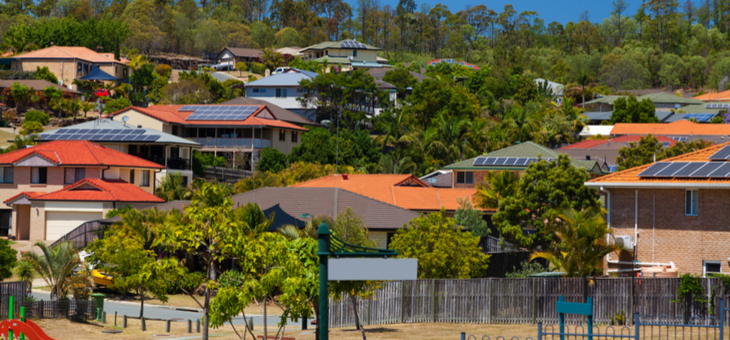Solar panels are being installed on rooftops across Australia at an increasingly rapid rate, with more than two million in operation at December last year, as the cost of electricity continues to bite and panels become more affordable.
However, a national audit has found that up to one-quarter of all rooftop units inspected posed a severe or high risk due to faulty wiring and unsecured panels, The Australian reports.
The Australian Energy Market Operator (AMEO) is considering retrofitting rooftop panels to ensure they meet compliance standards after Energy Minister Angus Taylor said last month that lives could be at risk from unsafe or substandard solar panel installations.
Pressure for such a move intensified after the AEMO admitted that installation quality issues may have been responsible for some units failing to adequately respond to a major outage last year. That led to power issues in two states – NSW and Victoria – after a lightning strike caused Queensland and South Australian interconnectors to trip last August.
A subsequent investigation found thousands of rooftop solar units did not comply with Australian standards.
“A range of supply sources, including solar, wind and coal generators, either crashed or were unable to assist in boosting supply to either of the two states, renewing concerns over the challenges of integrating a surge of cheap but intermittent renewable energy supply within the national grid to complement existing base-load generation,” The Australian reports.
“Changes to compliance and accreditation processes may be needed, according to AEMO, as it investigates why the solar inverters – which convert electricity from rooftop panels into power that can be fed to the grid – failed to respond as expected. This could even involve retrofitting some solar devices to ensure they meet standards, a move that could come at a high price.”
AEMO’s executive general manager for operations, Damien Sanford, told The Australian that Australia was a world leader in the volume of residential solar.
“We don’t want to slow that development down, but we want to make sure that what’s going on is supportive of the grid’s needs,” he said.
State and territory governments are responsible for monitoring installation procedures.
Meanwhile, The Age reports that a waste management plan needs to be developed for the tens of thousands of ageing rooftop solar panels that are nearing their use-by dates.
The main materials used in photovoltaic panels are glass, polymer and aluminium, but some also contain potentially hazardous materials such as lead, copper and zinc.
Total Environment Centre director Jeff Angel said: “We’ve had a solar panel industry for years which is an important environmental initiative, and it should have been incumbent on government to act in concert with the growth of the industry so we have an environmentally responsible end-of-life strategy.”
The Australian Council of Recycling told The Age that a national program to recycle computers and televisions had been successful and solar panels and batteries should be subject to similar schemes.
Fifty per cent of 855 respondents to a YourLifeChoices Friday Flash Poll on energy said they had solar panels and another six per cent said they intended to buy panels.
Do you have solar panels and do you have them checked periodically? Do you have a plan for when they need to be replaced?
Related articles:
Confusion on energy woes
Solar savings explained
Pay off solar sooner than you think

